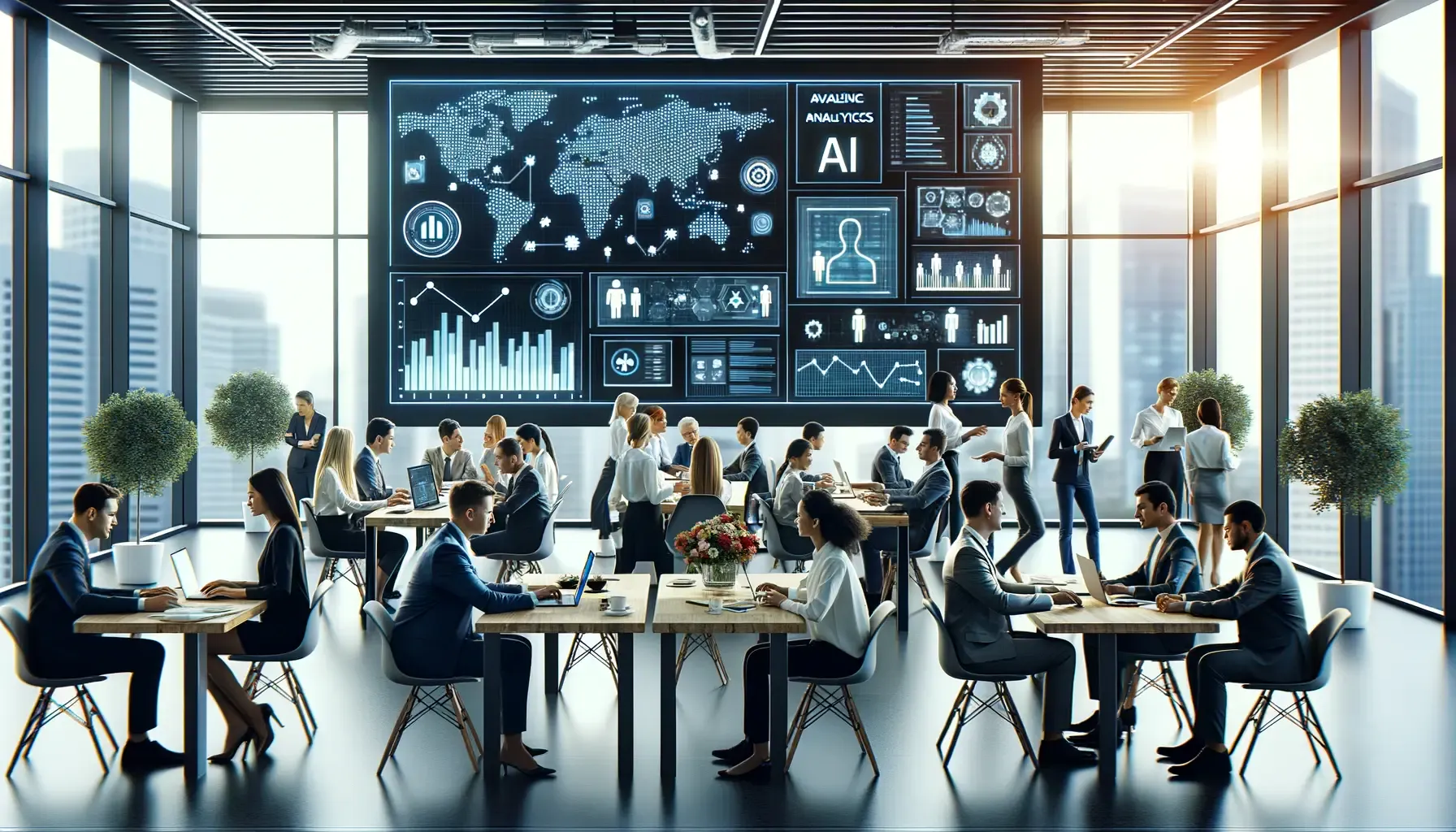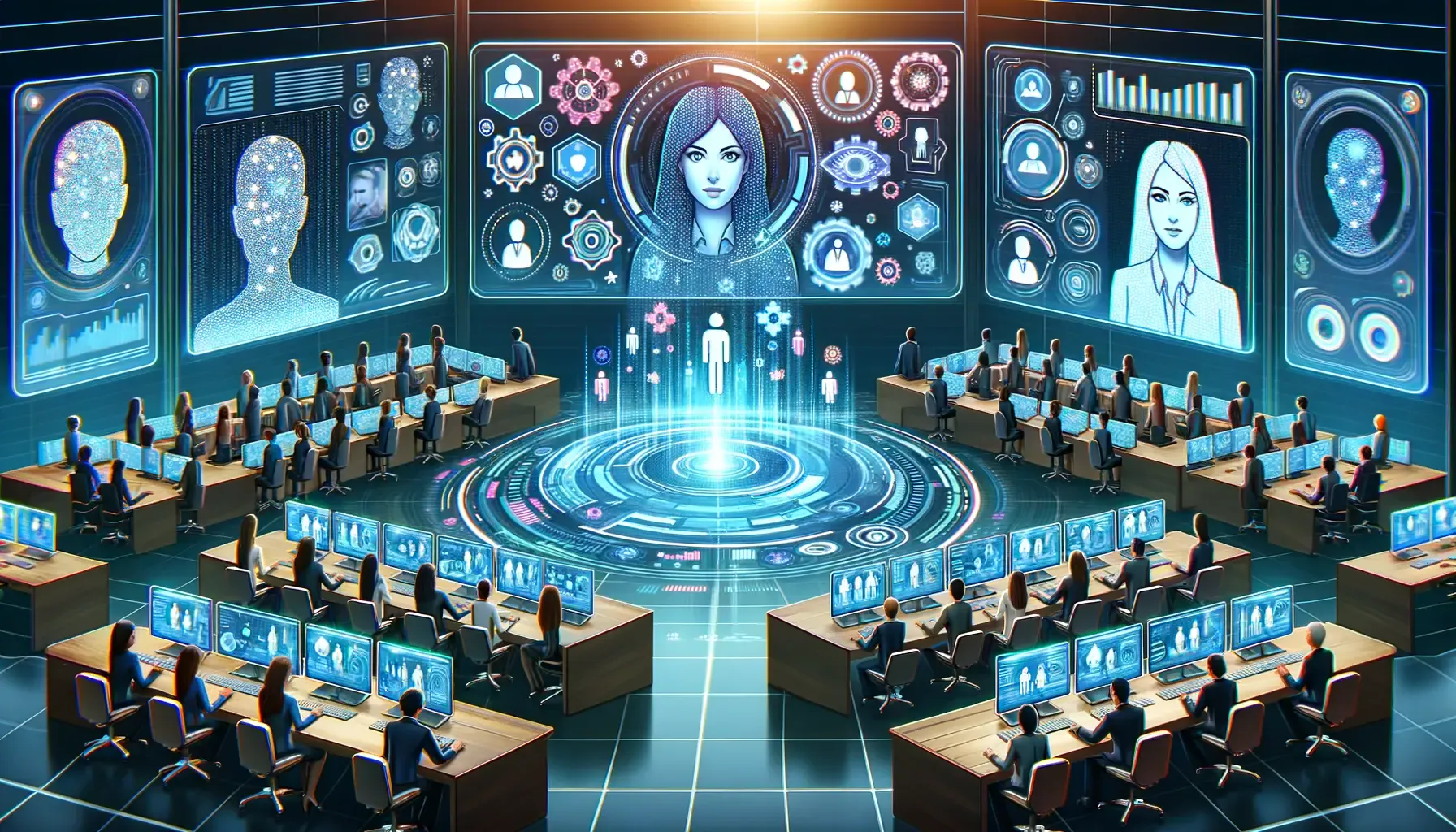Table of Contents
The world of Human Resources (HR) has undergone a seismic shift with the advent of Artificial Intelligence (AI) and automation. The traditional methods of managing workforce have evolved into more efficient and sophisticated practices, thanks to the incorporation of these technological advancements.

What is HR Workforce Management?
HR workforce automation streamlines HR processes, reduces manual work, and improves efficiency. Tools that automate HR workflows integrate with various HR systems, ensuring that data flows seamlessly between applications and that administrative tasks are completed quickly and accurately.
In conclusion, HR workforce management is a comprehensive approach to managing an organization’s workforce, aimed at optimizing performance, engagement, and alignment with business goals. The integration of AI and automation enhances these processes, making HR more efficient, data-driven, and strategic.
This article delves into the top five breakthroughs in HR workforce management, exploring how AI automation is not just a trend, but a revolutionary approach to handling employee-related functions more effectively.
AI-Driven Recruitment and Talent Acquisition
The first major breakthrough in transforming HR workforce management is the integration of AI in recruitment and talent acquisition. Gone are the days of manual resume screening and time-consuming candidate searches. Today, AI-powered tools like LinkedIn Recruiter and HireVue are used to automate job postings, source potential candidates, and even conduct preliminary interviews. These tools analyze resumes, assess skills and experience, and rank candidates to help HR professionals make informed decisions quickly. The result is a faster, more efficient recruitment process that identifies the best fit for the company.
Example: LinkedIn uses AI algorithms to match job postings with potential candidates based on their profiles, skills, and preferences. This not only streamlines the recruitment process but also increases the chances of finding the right fit for a position. The AI algorithms analyze vast amounts of data, including previous hiring patterns and candidate interactions, to make smarter matching recommendations.
Employee Onboarding and Training
Once the right candidates are hired, the next challenge is effectively integrating them into the company. AI is playing a pivotal role in streamlining employee onboarding and training processes. Tools like WorkBright allow for remote document submission and verification, making the onboarding process smoother and more convenient for both HR and new hires. AI-driven learning management systems (LMS) provide personalized learning paths, ensuring that employees receive relevant training that aligns with their roles and career aspirations. This targeted approach to training not only enhances the learning experience but also accelerates the time it takes for new hires to become productive members of the team.
Example: SAP’s SuccessFactors Onboarding solution automates many onboarding tasks and provides new hires with personalized content and resources. This helps in reducing the administrative burden on HR, allowing them to focus more on creating a welcoming experience for the new employees. IBM’s Watson is an example of how AI can be used for employee training and development. Watson can personalize learning experiences based on individual employee needs, track progress, and recommend additional learning materials.
Performance Management and Employee Engagement
AI is revolutionizing performance management and employee engagement, providing real-time feedback and personalized development plans. Platforms like 15Five and Lattice use AI to track employee performance, facilitate continuous feedback, and guide managers in conducting more effective performance reviews. These tools help in identifying areas of improvement and celebrating achievements, fostering a culture of continuous learning and development. Additionally, AI-driven employee engagement tools like Glint and Peakon gather employee feedback, analyze the data, and provide actionable insights to improve workplace satisfaction and productivity. This proactive approach to managing performance and engagement leads to a more motivated and engaged workforce, ultimately driving business success.
Example: Adobe is a great example of a company that has revolutionized performance management with its Check-in system. This approach focuses on regular, informal check-ins between managers and employees, rather than annual reviews. Project Oxygen, an initiative by Google, used data analytics to identify the key characteristics of a good manager, leading to improved manager performance and employee engagement.
HR Workforce Automation
The fourth breakthrough in Human Resource workflow management is the automation of Human Resource workflows. From leave requests to expense approvals, AI-powered tools are streamlining administrative tasks, reducing manual errors, and freeing up HR professionals to focus on strategic initiatives. Tools like Zapier and Workato integrate with various Human Resource systems, automating workflows and ensuring that data flows seamlessly between different applications. This level of automation not only improves efficiency but also enhances data accuracy, leading to better-informed business decisions.
Example: Coca-Cola has successfully utilized workforce planning to optimize its workforce. The company uses predictive analytics to anticipate future workforce needs, identify skill gaps, and develop strategies to address them. This proactive approach ensures that Coca-Cola has the right people, with the right skills, in place to meet future business demands.

Predictive Analytics and HR Workforce Planning
The final breakthrough in transforming HR workforce management is the use of predictive analytics for strategic workforce planning. AI tools are capable of analyzing vast amounts of employee data, identifying trends, and predicting future workforce needs. Platforms like Visier and Workday provide HR professionals with insights into employee turnover, talent gaps, and other critical workforce metrics. This data-driven approach to workforce planning enables companies to proactively address talent needs, ensuring that they have the right people, with the right skills, in the right places to achieve their business objectives.
Example: Unilever is an example of a company that has embraced HR workflow automation to improve efficiency and reduce manual work. The company implemented a digital hiring process that uses AI to screen resumes, conduct digital interviews, and even make final hiring decisions. This has significantly reduced the time and resources spent on the recruitment process, allowing HR to focus on more strategic activities.
Conclusion
The integration of AI and automation in HR workforce management is not just a trend, but a transformation that is here to stay. From recruitment and onboarding to performance management and workforce planning, these technological advancements are enabling HR professionals to operate more efficiently, make data-driven decisions, and contribute to the overall success of their organizations. The top five breakthroughs discussed in this article highlight the powerful impact of AI automation on HR workforce management, paving the way for a more streamlined, effective, and future-ready HR function.
These examples illustrate how various companies have successfully implemented AI and automation in HR workforce management, leading to improved efficiency, employee engagement, and overall organizational success. The integration of these technologies in HR processes is no longer a luxury but a necessity for staying competitive and attracting top talent.





